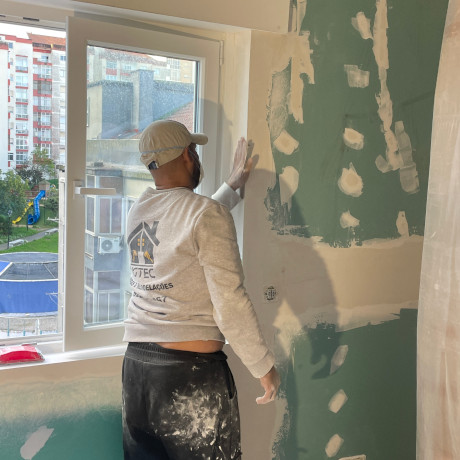- +351 966 567 882
Thermal insulation in Portugal
What is thermal insulation ?
Thermal insulation is a method of reducing heat transfer between different temperatures. It improves energy efficiency and thermal comfort in buildings, equipment, pipes and other systems.
What materials are used for thermal insulation ?
There are different options for thermal insulation on the market. The most used are Airgel, glass wool, rock wool, polyurethane foam, expanded polystyrene (EPS) are materials available for thermal insulation. These materials have properties that slow the passage of heat through various means, such as conduction, convection and radiation.
Where can thermal insulation be applied ?
Insulation can be carried out on the inside or outside of properties.
External insulation, also known as ETICS (External thermal insulation composite system), is the insulation system made with a hood.
Internal insulation can be done on:
- ceiling
- walls
- floor
- windows
The most common material is rock wool.
Rock wool is an insulating material made from volcanic rocks. It is mainly used for thermal and acoustic insulation in residential and industrial buildings. Rock wool is fire resistant, has good energy efficiency and provides a more comfortable environment. Furthermore, it is a sustainable material, as it is produced with natural and renewable raw materials.
What are the advantages of thermal insulation?
Good thermal insulation insulates the property from heat on hotter days and from cold in winter, without the need for air conditioning equipment.
These are the advantages of thermal insulation:
By having the ideal temperature in your property, it will not be necessary to use air conditioning machines as frequently.
Some of the materials used in thermal insulation have acoustic insulation properties, such as rock wool, wood fibers or pressed cotton.
Certain areas of the house, such as the attic or basement floors, end up being uncomfortable due to unpleasant temperatures or extreme humidity. Thermal insulation will bring comfort to these rooms.








